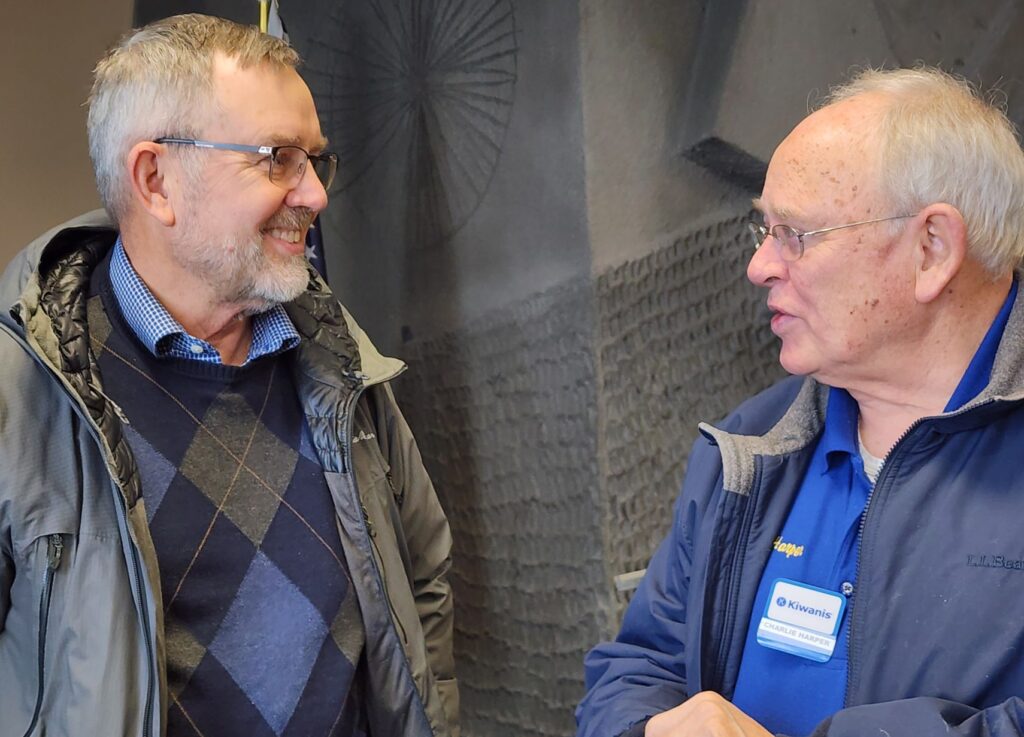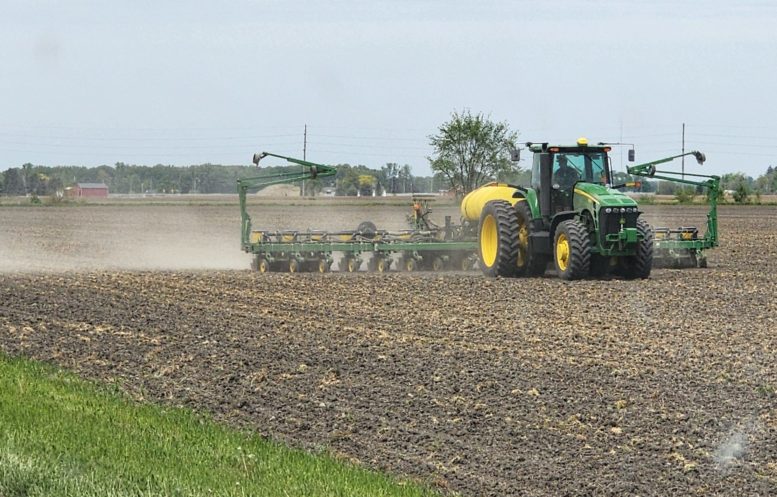By JAN McLAUGHLIN
BG Independent News
When Alan Sundermeier retired as agriculture educator for the OSU Extension office in Wood County, he wasn’t looking for another job.
But the prospect of helping farmers get good yields while not harming soil and water resources appealed to Sundermeier.
Working with the non-governmental Conservation Action Project, he shows farmers in the Maumee River watershed how to use cutting edge technology and agricultural practices, while reducing the amount of runoff going into the river and Lake Erie.
“So many mandated things are tough because they hurt the farmers’ bottom line,” Sundermeier said last month during a meeting of the Bowling Green Kiwanis Club. And “margins are getting slimmer all the time,” between farmers’ profits and expenses.

But the potential of not buying more fertilizer and improving the soil’s natural productivity, is attractive to farmers willing to give it a chance.
“I wasn’t looking for another job,” Sundermeier stressed. But the opportunity to make a difference in the region’s water and soil convinced him otherwise.
Conservation Action Project is a local, non-governmental organization established “to be a positive influence and voice in promoting Ohio’s agriculture through innovative programs that will improve the quality of Ohio’s soil and water resources.”
The effort is led by a board of trustees made up of farmers, agricultural product dealers, and soil and water conservation district (SWCD) staff or supervisors from Defiance, Fulton, Henry, Lucas, Paulding, Williams and Wood counties.
Since 1988, CAP has partnered with local entities as backers in providing funds to implement conservation programs and grant opportunities for local farmers. In the early days, for example, CAP began a yield monitoring program to help producers get monitors in their combines.
More recent projects have helped to get cover crops on the ground as well as strip-till equipment into local fields. With the ever changing technology and conservation practices in agriculture, CAP works to stay on the forefront of those programs.
Sundermeier shared some of the methods tested for effective production and conservation, such as:
- Spreading no phosphorus fertilizer on fields for five years, then testing to see how plants are affected.
- Using byproducts of wastewater, recycling nutrients from wastewater streams, reducing leaching of phosphorus and nitrogen, while maintaining or even improving yields.
- Use reduced rates of nitrogen fertilizer on fields. While this could result in the total yield being down, the overall profits could be greater since less is spent on fertilizer.
- Use cover crops for natural sources of nutrients.
- Use locally sourced compost extract with worms to restore biological functionality to soils.
“I’m not here to be anti-fertilizer,” Sundermeier said. But a great deal of fertilizers come from nations that have unrest or don’t have good relationships with the U.S. The ag industry needs to be “smart enough to figure this out,” so the U.S. isn’t dependent on those countries, he added.
“We need to look backwards to move forward,” he said, noting that a century ago farmers grew healthy crops without fertilizer.
“As you might guess, people who sell the fertilizer aren’t really gung-ho about this,” he said.
Sundermeier also believes in the importance of using the latest technology to grow crops while not harming the soil and water. That includes DNA testing of the soil.
“I think this is quite exciting,” he said. “This is the future. We need to understand these things to move forward.”
Innovative farmers, those “willing to take a little risk,” will see results, Sundermeier said.
“It’s going to take some time. Some of these farmers are never going to adapt to this.”

